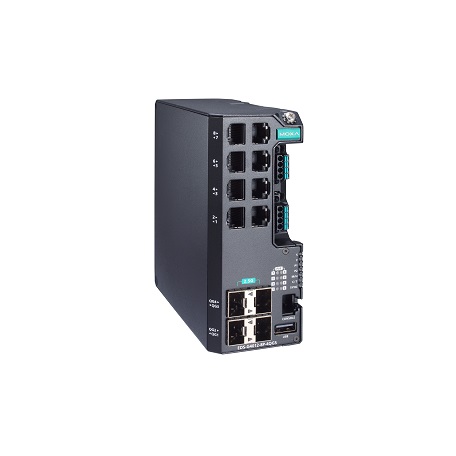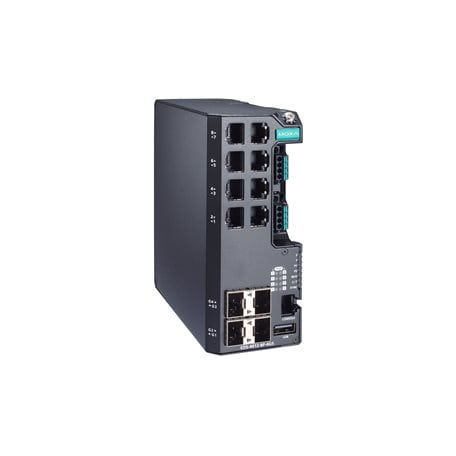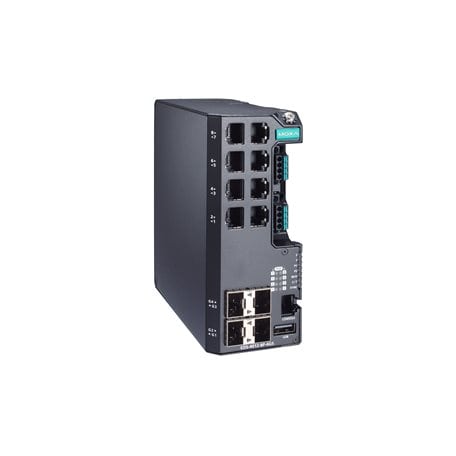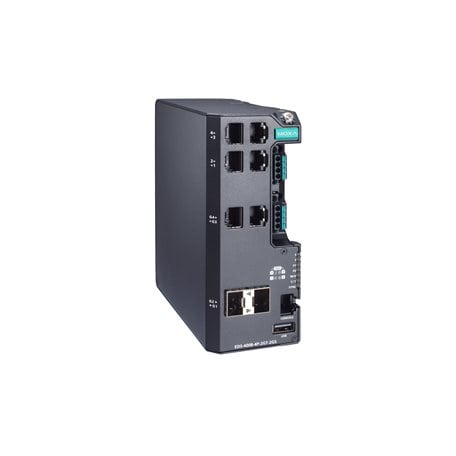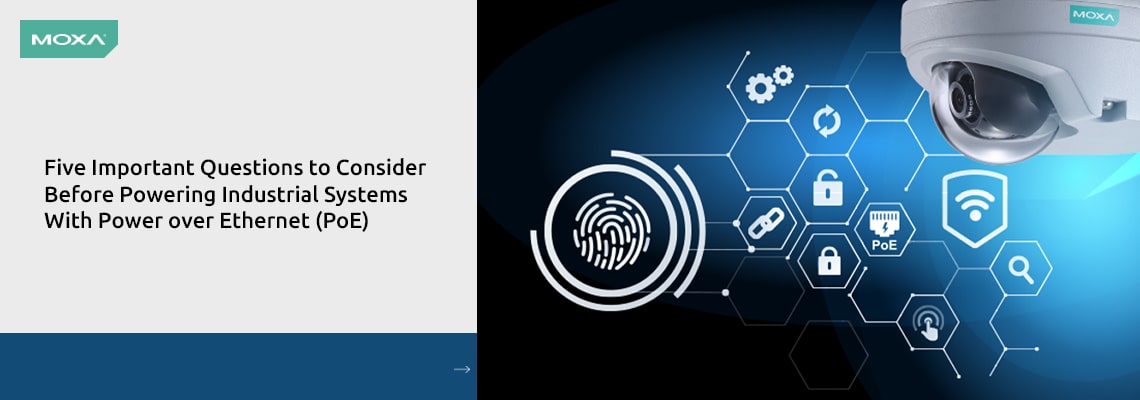
Are you experiencing difficulties transferring data between devices and your industrial systems, as well as powering dozens and dozens of PDs such as IP cameras and wireless access points, simultaneously? A power supply method known as PoE uses cables to send power through power-sourcing equipment, aka PSE. PoE provides more flexibility, along with time and expense reductions. For instance, since you do not need to install a brand-new power outlet at every endpoint, electrical installations can be done faster and cheaper. Moreover, not having to be connected to fixed electrical sockets is another benefit of using a PSE. A PoE switch or other PSE can be simply connected to PDs by installing them where they are required. Moving the PSE if future adjustments or expansions are requested is significantly simpler. The usual 15 or 30 Watt PoE is no longer sufficient as a result of the increasing market need for higher-resolution IP cameras and wireless access points, which connect to many more devices. Also, confirming PSE and PDs are compatible with one another can take a lot of time, and industrial engineers don't particularly prefer getting it done.

In this post, we'll explore the solutions to several significant concerns about the system lifespan of industrial systems that we constantly run into. You will have learned additional information regarding how to set up industrial systems that use PoE solutions by the time you're done with the rest of the article.
solutions to several significant concerns
1. Which PoE standard can handle PDs with high power usage, like IP cameras?
Have you ever purchased an IP camera
and then struggled to identify a PoE switch that could support it? To
prevent issues down the road, it is important to take into account the
compatibility between PSEs and PDs while implementing industrial systems. Industrial
engineers began to appreciate the benefits of the IEEE 802.3af PoE standard
soon after it was launched in 2003, which is why, since then, we've seen
continuously more PoE switches used in the field. Yet as technology
advances and includes new features like object detection and light scanning,
the devices become more complex and require increased power. To handle
increasing power output, manufacturers have developed proprietary protocols in
response to this shift. This can often have the unintended effect of creating
compatibility problems between PDs and PSEs. While selecting networking devices
for a system, you must take these potential problems into
account. Many instruments that can detect voltages and track power capacity can
be used to test interoperability. Before deploying PDs and PSEs into the field,
it is strongly advised to check the device to confirm compatibility using a
tool or software like Sifos, or to use PDs and PSEs that comply with the IEEE
802.3 at/af/bt standard.
2. How can you know whether you have enough bandwidth in the best way possible?
Have you ever faced a situation where the network is working but the IP camera's video cannot be transmitted properly cause data packets are delayed? Real-time high-quality images or video streams must be transmitted to the control center for many industrial deployments, which typically causes a rise in the required bandwidth.
In
order to continuously provide high-quality video shots on 4K or UHD
cameras without quality degradation or video losses, PoE switches must have
access to sufficient bandwidth. Full-Gigabit-port PoE switches can
dependably meet this need, but they can be an unaffordable solution.
Utilizing PoE switches with Gigabit or even 2.5 GbE port combinations is
an excellent option since it will significantly boost network flexibility
without requiring you to invest in the costliest option.
3. Without knowing the power consumption specifications for each PD, how can you reliably deploy your PoE devices on networks?
Have
you ever found yourself having to adjust your PoE switches to the appropriate
standard after determining the PoE power consumption of your powered devices,
such as IP cameras? We should consider the different alternatives to make this
process simpler as it can be a bit challenging. A typical situation occurs when
an individual intends to use an IEEE 802.3bt 90 W output PoE switch, but the
powered devices, such as wireless APs and IP cameras, consume 15 W to 90 W
of power. There are now options available thanks to recent technological
advancements that let you stay away from this situation. An example is PoE switches, which can identify the power consumption of powered devices
automatically, eliminating the need to enter the PD's specifications into the
web GUI. The industry has recognized how much deployment and configuration are
simplified by the capability that detects power consumption automatically.
4. What is the most practical way to find out whether remotely deployed PD has a problem?
Have you ever received a report from a client asking for immediate assistance simply because one of their IP cameras isn't working properly? The IP camera may be a long way away, as is frequently the case, making asset owners hesitant to send engineers to the field site without a high probability that they are going to be able to resolve the issue. In these cases, more informatioFn regarding the problem is needed.
Usually,
industrial applications are located in hazardous,
off-the-beaten-track locations. In a perfect scenario, PoE switches would
be capable of remotely rebooting PDs and running failure checks. This
will give the owner useful insights about what is occurring at the field site
so that, if professionals need to be sent, they do so efficiently and with the
right equipment. Setting up emails, relay notifications, or trap alerts to
deliver data on the state of the PD is one of the most efficient methods of
achieving this. Also, management software makes it simpler for you to identify
any problems that your devices might be having at remote locations.
5. How can the security of networking devices be improved?
Have you ever thought that your IP surveillance devices are protected against cybersecurity risks since they're air-gapped and operate in a closed loop? This is incorrect! You may also have seen reports about businesses that assumed their systems were safe and secure but had their networks hacked and their video recordings stolen. Industrial network security is an essential factor in creating a strong and reliable network. You have a wide range of choices in modern industrial environments to achieve this. Implementing secure-by-design building blocks to build a reliable network infrastructure is a suggested strategy. Keep in mind that the PoE switches you choose should have security features like HTTPS/SSL, SSH, RADIUS, and TACACS+, as this will significantly boost the safety of your industrial network. Also, it is highly suggested to ensure the vendor you collaborate with really does have an efficient vulnerability management procedure. To guarantee that your systems can remain secure for the duration of their deployment, suitable mitigations and communication must be made when vulnerabilities are disclosed.
A valid and reliable solution that helps you fulfill customer expectations will always be an ideal option, as industries are constantly evolving and consumers expect more from their networks. And as always, Moxa is here to help! With up to 90 W of output per port, Moxa's EDS-4008, EDS-4012, and EDS-G4012 Ethernet switches provide models with up to 8 IEEE 802.3bt PoE ports. Moxa's EDS-4000/G4000 Series PoE switches passed the Sifos PoE test for compatibility, ensuring that every PSE port complies with IEEE 802.3at and IEEE 802.3bt standards as well as industry standards for safety and interoperability.
Easy World is Moxa's official distributor in the Middle East. For any further information, please contact us via sales@eworldme.com.

